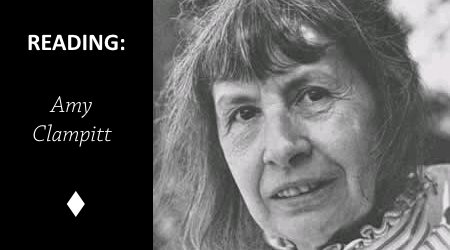Amy Clampitt (1920-1994) from Iowa wrote most of her poetry when she was over sixty. I found a poem entitled ‘fog’ that I like because of its precise description:
Fog
A vagueness comes over everything,
as though proving color and contour
alike dispensable: the lighthouse
extinct, the islands’ spruce-tips
drunk up like milk in the
universal emulsion; houses
reverting into the lost
and forgotten; granite
subsumed, a rumor
in a mumble of ocean.
Tactile
definition, however, has not been
totally banished: hanging
tassel by tassel, panicled
foxtail and needlegrass,
dropseed, furred hawkweed,
and last season’s rose-hips
are vested in silenced
chimes of the finest,
clearest sea-crystal.
Opacity
opens up rooms, a showcase
for the hueless moonflower
corolla, as Georgia
O’Keefe might have seen it,
of foghorns; the nodding
campanula of bell buoys;
the ticking, linear
filigree of bird voices.
I have strong myopia so whenever I take off my glasses I experience the ‘universal emulsion’ and my visual world becomes ‘a rumor in a mumble of ocean’. Clampitt’s description of the island fog is relentless and precise. The subsuming of the visual details opens up the space for tactile and auditive experiences, a feat I particularly like because our culture’s preference for the visual.
I could, in order to understand the poem better, look for a picture of campanula, foghorns, the hueless moonflower, dropseed, furred hawkweed, panicled foxtail and needlegrass, but I won’t. Instead, I imagine these plants in their vagueness and try to distinguish form and contours in the bird voices I hear as I write this short daily poetry notition.

One thought on “Reading: Fog by Amy Clampitt”
Comments are closed.